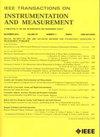Contrastive Learning of EEG Representation of Brain Area for Emotion Recognition
IF 5.6
2区 工程技术
Q1 ENGINEERING, ELECTRICAL & ELECTRONIC
IEEE Transactions on Instrumentation and Measurement
Pub Date : 2025-01-27
DOI:10.1109/TIM.2025.3533618
引用次数: 0
Abstract
Emotion recognition based on electroencephalography (EEG) has demonstrated promising effectiveness in recent years. However, challenges have been experienced, such as limited dataset availability, experimental protocol inconsistencies, and inherent spatiotemporal redundancies in the EEG data. In this work, we introduce a novel method of contrastive learning of EEG representation of brain area (CLRA). Our method is based on the fact that the EEG signals are of high similarity within brain regions and show significant differences between brain regions. The model is designed to obtain the representation capable of distinguishing signals from different brain areas. Specifically, a 1-D convolutional neural network (CNN) and a recurrent network were applied to learn temporal representations from channelwise EEG in contrastive learning. The representations were recombined and fused to extract features for emotion classification. Experimental evaluations performed on public database for emotion analysis using physiological signals (DEAP) and Shanghai Jiao Tong University emotion EEG dataset (SEED) demonstrate the efficacy of our proposed framework, yielding state-of-the-art results in EEG-based emotion recognition tasks. In our cross-subject experiment, our method achieved an accuracy of 95.23% and 96.31% in valence and arousal on the DEAP, and an accuracy of 95.16% on SEED. Additionally, our experiments involving reduced channel configurations demonstrated an improvement in classification accuracy even with fewer electrodes. Furthermore, CLRA exhibits strong generalization performance and robustness, facilitated by its ability to extract informative single-channel features, thus enabling seamless cross-dataset integration and training.求助全文
约1分钟内获得全文
求助全文
来源期刊

IEEE Transactions on Instrumentation and Measurement
工程技术-工程:电子与电气
CiteScore
9.00
自引率
23.20%
发文量
1294
审稿时长
3.9 months
期刊介绍:
Papers are sought that address innovative solutions to the development and use of electrical and electronic instruments and equipment to measure, monitor and/or record physical phenomena for the purpose of advancing measurement science, methods, functionality and applications. The scope of these papers may encompass: (1) theory, methodology, and practice of measurement; (2) design, development and evaluation of instrumentation and measurement systems and components used in generating, acquiring, conditioning and processing signals; (3) analysis, representation, display, and preservation of the information obtained from a set of measurements; and (4) scientific and technical support to establishment and maintenance of technical standards in the field of Instrumentation and Measurement.
 求助内容:
求助内容: 应助结果提醒方式:
应助结果提醒方式:


